Also available in: Deutsch
Are you looking for the best Rome things to do for your next trip to the “Eternal City”? The Italian capital Rome is a city that captivates every visitor with its millennia-old history, vibrant culture, and great sights. Whether you are going on a city trip or planning to stay longer, Rome is always worth a visit.
11 Rome Tips and Attractions
- How to Get To Rome
- Accommodation in Rome – Our Hotel Tip
- 1. Colosseum
- 2. Roman Forum (Forum Romanum)
- 3. Palatine Hill
- 4. Monumento Vittorio Emanuele II
- 5. Pantheon
- 6. Piazza Navona
- 7. Vatican
- 8. Castel Sant’Angelo
- 9. Spanish Steps
- 10. Trevi Fountain
- 11. Terrazza del Pincio and Villa Borghese
- Rome Things to Do: Tours and Tickets
From the majestic ruins of the Colosseum to the Vatican, a small city-state in the middle of Rome, to the picturesque atmosphere of the Spanish Steps – Rome truly has a lot to offer. In this guide to our Rome things to do, we provide you with valuable insights into which attractions you should not miss when visiting Rome.
How to Get To Rome
The journey to Rome is uncomplicated and convenient thanks to the diverse transport connections. By plane, you can land at many European cities either at Fiumicino, Rome’s main airport, or at the smaller Ciampino airport. Both airports offer good connections by train, bus, or taxi to the city center. You can find times, prices, and tickets on Skyscanner.
Rome also has a large main train station, Roma Termini, which is excellently connected to the Italian and European railway network. Long-distance buses, such as those from Flixbus, are also an alternative. More information, tickets, and prices can be found at Omio.
Info: Transfers from the airports or the main train station can be found with our partner GetYourGuide. It is often worth booking these in advance.
If you prefer to travel by car, that is also possible, and Italy offers a good network of highways. However, when driving and parking in Rome’s city center, there are many regulations to keep in mind, as many zones are partially closed to traffic.
Accommodation in Rome – Our Hotel Tip
The hotel Residenza Roma Imperiale is centrally located near the Colosseum, the Roman Forum, and Palatine Hill, all just a few minutes’ walk away. The air-conditioned rooms are equipped with TV, bathroom, coffee maker, and some even offer city views. The friendly hotel staff is always ready to assist with any questions. Additionally, you can even rent bicycles from the hotel to explore Rome in this way.
You can find an overview of other hotels in Rome, including those in other districts, here.
1. Colosseum
The Colosseum is, of course, our number one among the Rome things to do. It is the largest amphitheater of the ancient world and a testament to Roman architecture. It was built between 70 and 80 AD and inaugurated under the emperors Vespasian and Titus. Until about the 5th century, it was used for gladiator fights, public spectacles, and entertainment. Later, it even served as a fortress and quarry.
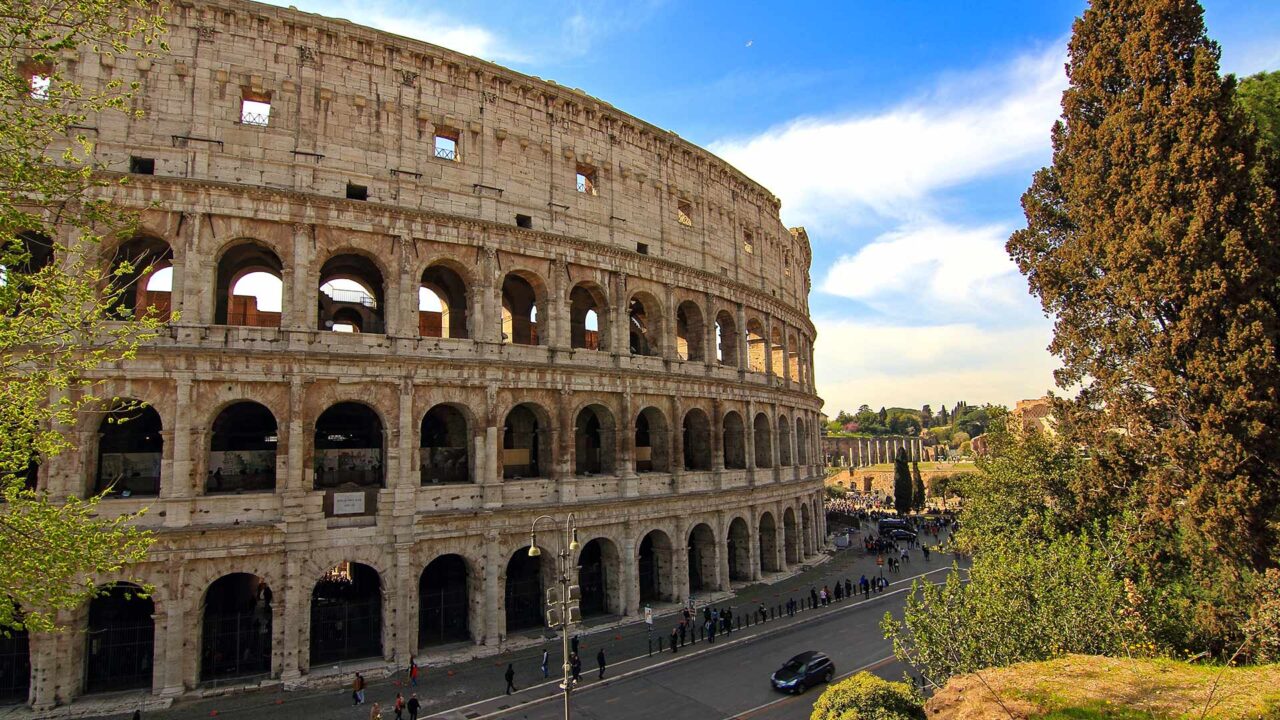
Today, the Colosseum is a landmark of the Italian capital and one of the most popular tourist attractions in Rome. It is open daily from 8.30 AM to 4.30 PM. However, in spring and summer, it is open longer, closing between 5.00 PM and 7.00 PM. Therefore, check the current opening hours in advance if you plan to visit the Colosseum. Depending on the type of ticket you choose, prices start at €35 per person.
Note: If you want to admire the Colosseum not only from the outside, we recommend a guided tour. This way, you don’t have to wait in line on-site, and the Palatine Hill and the Roman Forum are usually included in the program. It is also advisable to book tickets in advance for your visit.
2. Roman Forum (Forum Romanum)
It wasn’t until excavations in the 18th and 19th centuries that the Roman Forum was uncovered again, making it one of the most important excavation sites in Rome. The Roman marketplace, which Forum Romanum means, was the political, economic, and religious heart of the Roman Empire and was built in the 7th century. Here, assemblies, elections, and public speeches were held – it was the center of trade and also a religious site with many temples.
The Forum Romanum is nestled in a valley between three hills and can easily be combined with a visit to the Colosseum. The open-air museum offers a great view into the ancient past of the Roman Empire with important buildings such as the triumphal arches (e.g., Arch of Titus), the basilicas (e.g., Basilica Julia, Basilica Aemilia), or the temples (e.g., Temple of Saturn, Temple of Vesta).
Admission varies depending on the ticket. It usually starts at around €20, but you can purchase the ticket as part of a combo ticket with the Colosseum or Palatine Hill. It is open daily from 8.30 AM to about 7.00 PM.
3. Palatine Hill
One of the seven hills of Rome is the Palatine Hill, from which you have a fantastic view of, for example, the Circus Maximus, the Roman Forum, the Colosseum, and the whole city. Therefore, it is one of our most important Rome things to do. The Palatine Hill is 40 meters high and was home to many nobles, so you can explore the ruins of imperial palaces, particularly the Domus Augustana.
The hill can be visited for free, but with a ticket, you can avoid the queues. The Palatine is often referred to as the birthplace of Rome and is the oldest part of the city that was inhabited. It gives you a sense of what it must have been like to live here back then. Explore the ruins and let yourself be transported back to antiquity. It is open daily from 8.30 AM. Depending on the season, Palatine Hill closes between 4.30 PM and 7.00 PM.
4. Monumento Vittorio Emanuele II
The monument, built of marble in the neoclassical style in honor of Victor Emmanuel II, the first king of unified Italy, was inaugurated as early as 1911. Today, the landmark for the unification of Italy is often used for state ceremonies, but at the same time, it is also a museum of history (Museo del Risorgimento), which you can visit. You can visit it daily for free from 10.00 AM to 5.00 PM.
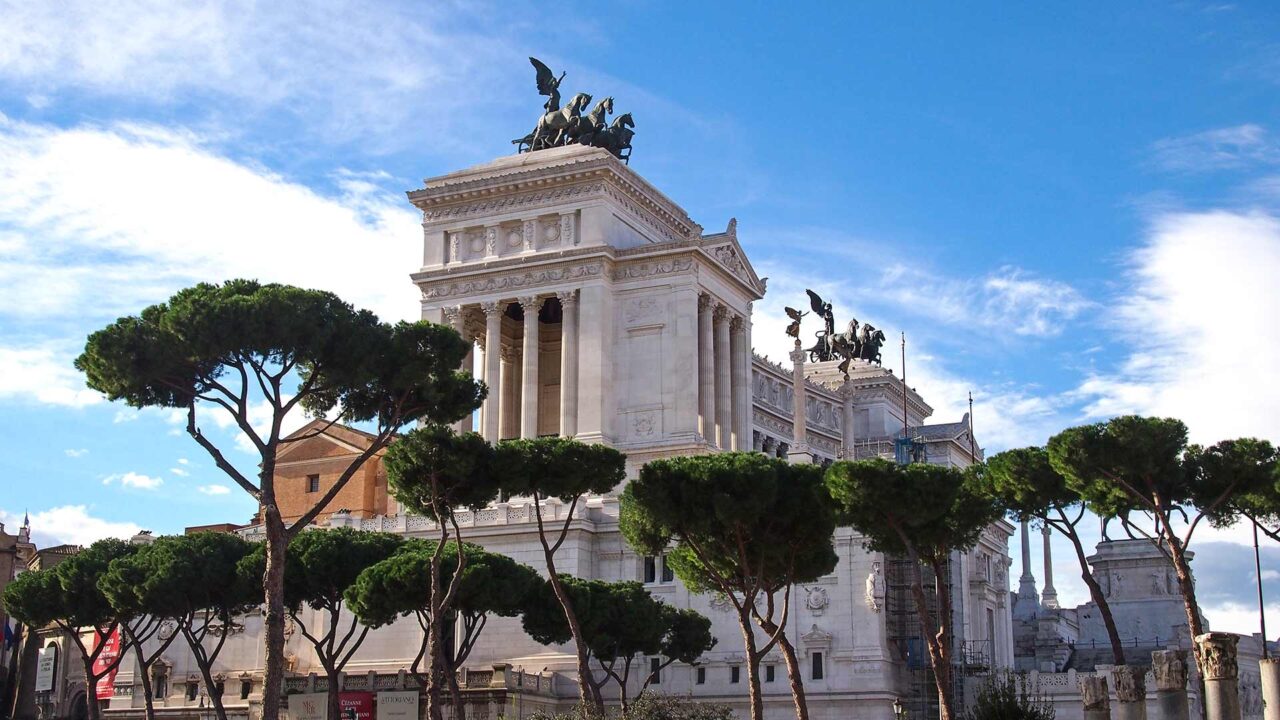
Additionally, the monument has a great rooftop terrace with the Vive. From there, you have a magnificent view over Rome with its many ruins and churches. The Vive is open daily from 9.30 AM to 7.30 PM. During the summer months, it is also open on weekends until 10.30 PM. You can buy tickets on-site or online in advance. Currently, the price is €17, with a discount for those under 25 years old, and free admission for those under 18 years old.
5. Pantheon
The Pantheon, built in 27 BC, was originally considered a temple for all gods. After a fire and the reconstruction under Emperor Hadrian around 125 AD, the Pantheon was converted into a church in the 7th century and dedicated to Saint Mary.
The Pantheon is one of the best-preserved buildings of ancient Rome, and today it is a true tourist magnet. Famous for its massive dome with a diameter of 43.3 meters and the opening at the top, you can also admire the tombs of many famous Italians here, including the painter Raphael and the kings of Italy. Masses, such as the annual Pentecost Mass, are still held here.
The entrance fee to visit the famous building is €5 per person. It is open daily from 9.00 AM to 7.30 PM, but on Sundays, the Pantheon closes at 6.00 PM. It is even better if you book a ticket online before your visit. This way, you don’t have to stand in line, and you also get an audio guide.
6. Piazza Navona
Piazza Navona is one of the many public squares in the Italian capital and is considered one of the Rome things to do that one should know. Originally built in the 1st century AD as an ancient Roman stadium, Piazza Navona was transformed into a public square in the 15th century. Particularly impressive here is the baroque architecture of the surrounding buildings and the fountains on Piazza Navona.
The most famous is the Fontana dei Quattro Fiumi, the Fountain of the Four Rivers. It symbolizes the rivers Nile, Ganges, Danube, and Rio de la Plata. However, the Fontana del Moro and Fontana del Nettuno in the south and north of Piazza Navona also feature impressive architecture. You don’t have to pay an entrance fee here, as it is a public square.
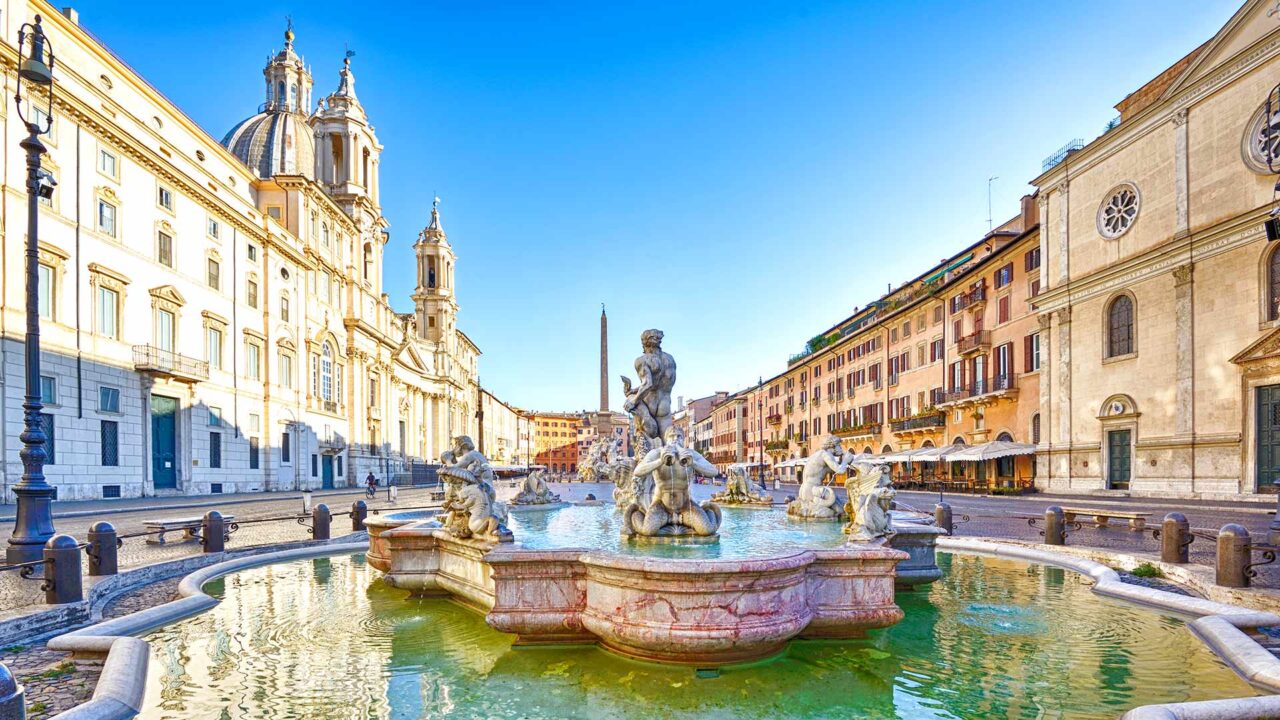
Around the square, there are numerous cafes, restaurants, and shops. Events or markets are also held here at irregular intervals, such as the annual Christmas market. Additionally, you can encounter many street artists and musicians here or simply watch the lively hustle and bustle in the heart of Rome. We found the atmosphere simply amazing!
7. Vatican
Although the Vatican is its own state, it is located in the middle of the Italian capital and is at the top of the list of Rome things to do for many. It is the spiritual and administrative center of the Roman Catholic Church and the seat of the Pope. At the heart of the Vatican lies St. Peter’s Basilica, the largest church building in the world and a masterpiece of Renaissance architecture.
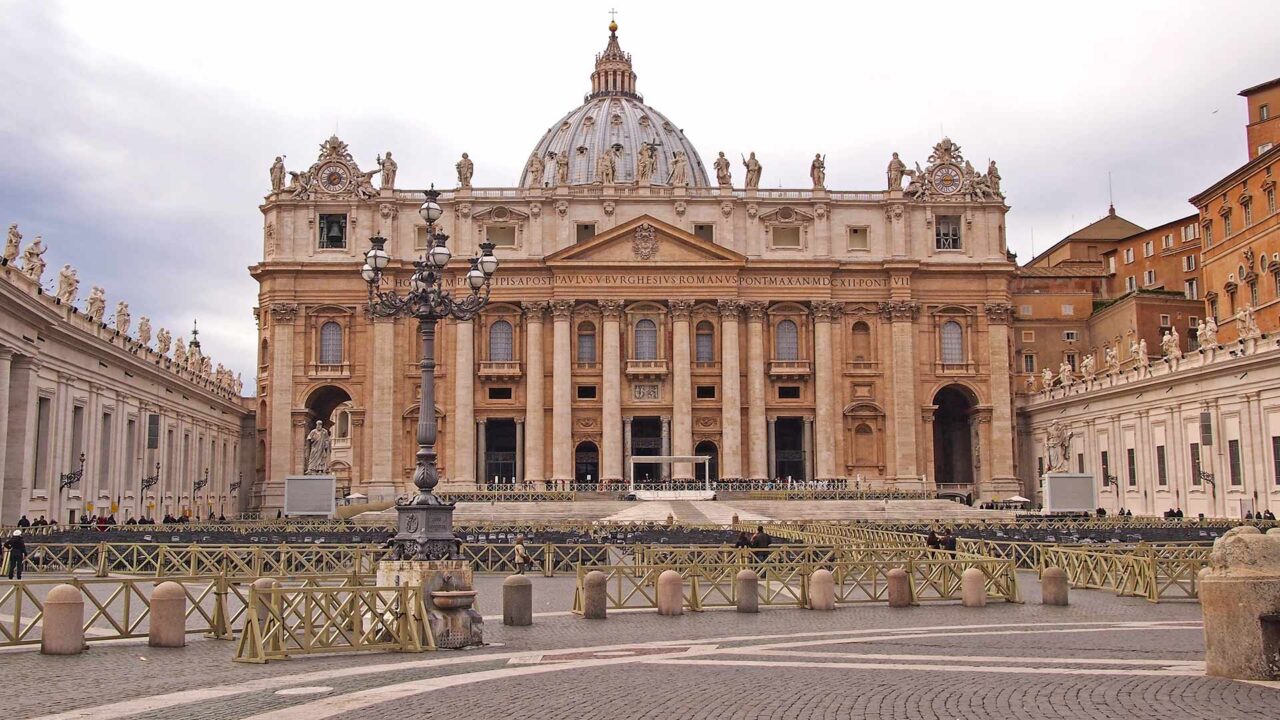
In addition to St. Peter’s Basilica, the Vatican Museums with their extensive collections of art and artifacts, which span the history of the Church and world art, are a must-see for every visitor. Another highlight for many visitors is, of course, the Sistine Chapel, famous for Michelangelo’s breathtaking ceiling frescoes.
The opening hours of the Vatican Museums vary. Generally, they are accessible from Monday to Saturday, with some exceptions on holidays. Since the Vatican is usually very busy, we highly recommend booking tickets in advance to avoid long lines. While you can visit St. Peter’s Square in the Vatican for free, you have to pay an entrance fee to see the interior. Prices start at about €17 per person, with various ticket options available, including guided tours and priority entry.
8. Castel Sant’Angelo
Directly on the river Tiber, which runs through Rome, lies the Castel Sant’Angelo, built between 134 and 139 AD. Originally, Emperor Hadrian had it constructed as his mausoleum, but it was later used as a fortress and castle. There is even a passageway between Castel Sant’Angelo and the Vatican, as it was used as a refuge for the Pope.
On top of Castel Sant’Angelo, you can see a statue of the Archangel Michael, who, according to legend, ended the plague in Rome. Today, you can visit the interior of the castle, as it is a museum, and also see the dungeons or the mausoleum. The architecture is truly fascinating, and if you are interested in Roman history, you shouldn’t miss it. One of the popular attractions and definitely one of the most important Rome things to do.
It is open daily from 9.00 AM to 7.30 PM, with the last admission one hour before closing. Admission costs €10 per person. Under 18s can visit for free, and between 18 and 25 years you get a €5 discount. Since there can sometimes be queues at the entrance, it makes sense to book a ticket in advance.
9. Spanish Steps
The 135-step Spanish Steps are a very popular spot in Rome to observe the city’s happenings. Built between 1723 and 1725, it connects the Piazza di Spagna at the bottom with the Trinità dei Monti church at the top. It gets its name from the Spanish Embassy, which is located nearby.

Its baroque architecture, elegant curved shape, and harmonious design make the Spanish Steps a popular photo subject and one of our Rome tips. Even photoshoots take place here regularly. The visit is possible around the clock and also costs no admission. This can be perfectly combined with a visit to Villa Borghese or the Trevi Fountain (see next point).
10. Trevi Fountain
The Trevi Fountain is one of the most famous fountains in the world. It was built between 1732 and 1762 by the order of Pope Clement XII and is dedicated to the theme of the sea. You can see this by the central statue of Neptune, the god of the sea, flanked by Tritons and horses. The fountain is never empty of people, so expect many other visitors. You can visit the Trevi Fountain around the clock for free, and it is an absolute must-see when visiting Rome.
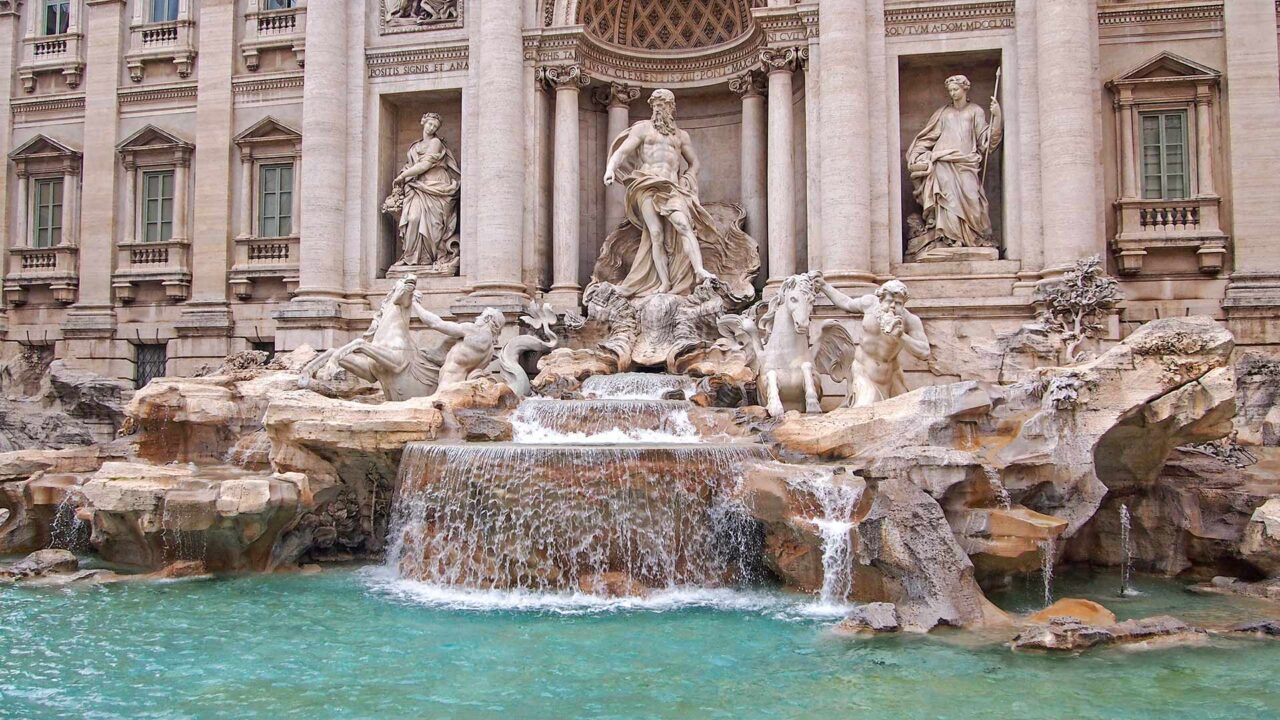
By the way, it is said that if you throw a coin over your left shoulder into the fountain, you will return. We have done this twice and have always returned to Rome so far. At least once a year, the coins are emptied, and in 2023, a total of 1.6 million euros was collected.
11. Terrazza del Pincio and Villa Borghese
The Terrazza del Pincio is located directly above the Piazza del Popolo and offers a fantastic view over the Eternal City. From here, you can even see St. Peter’s Basilica and the Monumento Vittorio Emanuele II. The terrace was built on the Pincio hill, one of Rome’s seven hills, and is especially popular at sunset.
A visit is worthwhile in conjunction with a walk through the adjacent gardens of the Villa Borghese. This is the largest public park in Rome. The Villa Borghese not only offers beautiful gardens and pathways, but also the Galleria Borghese, one of the most important art museums in the world. The collection includes masterpieces by artists such as Caravaggio, Bernini, and Titian.
You can visit the Terrazza del Pincio free of charge at any time. The park of the Villa Borghese is open daily from sunrise to sunset. The Galleria Borghese, on the other hand, is open Tuesday to Sunday from 9.00 AM to 7.00 PM. Admission prices for the Galleria Borghese start at around €15 per person, with various ticket options available. If you want to visit the museum, it’s best to buy a ticket in advance.
Rome Things to Do: Tours and Tickets
Do you prefer to travel with a guide who knows the area very well? Then we recommend a guided tour with a local. This way you can get to know Rome in a completely different way. GetYourGuide offers a wide selection of exciting tours for Rome.
Our tip, if you want to see many attractions in Rome and use public transportation, is the Roma Pass. Depending on the type of pass, you get free access to some attractions, can use public transport and toilets, and also receive discounts to museums and archaeological sites in Rome.
Have you ever visited Rome? Do you have any other Rome tips that are worthwhile? Feel free to write them in the comments.
Photos: Photo 1 (Colosseum): HannesAvem/shutterstock.com – Photo 3 (Piazza Navona): picturepixx/shutterstock.com – Photo 5 (Spanish Steps): Marco Rubino/shutterstock.com

Tobi
Hi, I'm Tobi, author, passionate travel blogger and founder of this blog. I've been traveling the world a lot since 2013, mostly in Southeast Asia, but sometimes also in Europe. The Thai island of Koh Phangan has become my home base when I'm not traveling. Find out more on our About Us page.